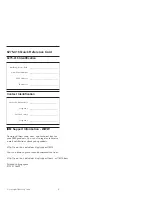
•
Barcode Label Length Reported to Host — the number of bar code characters reported to
the host application. This option provides interchange compatibility with libraries with more
limited bar code reading capabilities. The maximum length is 15 and the default is 8.
NOTE:
The industry standard length for bar code labels is 8 total characters. Because of
this, the tape libraries and associated application software (including Command View TL,
HPE Data Protector, and other backup applications) are extensively tested using 8 character
bar code labels. Although the tape libraries might be able to read labels with more than 8
characters, it is not assured that every application will operate correctly with these labels.
For compatibility with other libraries and with applications, use bar code labels with 8
characters.
•
Barcode Label Alignment Reported to Host — configures the end of the bar code label
characters to report to the host application when reporting fewer than the maximum number
of characters. For example, when reporting only six characters of the bar code label
12345678
, if alignment is left, the device will report
123456
. If alignment is right, the device
will report
345678
. The default is left.
•
Ignore Barcode Media ID — when disabled, the barcode Media ID on the tape cartridges
will be checked by the device. The device will only allow appropriate tape cartridges to be
loaded into tape drives. The barcode Media ID is the last two characters of the barcode. For
example, an LTO-4 labeled cartridge will not be allowed to move into an LTO-3 tape drive.
See
“Backward read compatibility” (page 45)
. When Ignore Barcode Media ID is enabled,
the device will move any tape to any tape drive. If the cartridge is incompatible with the tape
drive, a message will be displayed. Hewlett Packard Enterprise strongly recommends that
all tape cartridges have barcodes with the correct Media ID.
•
Magazine access using front panel - Admin password required — when enabled, the
Administrator password is required to remove the magazines from the front panel. When
disabled, the magazines can be removed using the OCP without entering a password. The
default is to require the Administrator password.
•
Select Language — The language option affects the text on the RMI, the error messages,
and the help pages. It does not affect the OCP menus, which will always be in English.
•
Enable Extended Mode— When the library extender is properly installed and extended mode
is enabled, the libraries will operate as an extended library.
The following settings are configurable for each logical library:
•
Library LUN Hosted By Drive — specifies the master tape drive for the logical library. The
default is the lowest numbered tape drive in the logical library. If a logical library has only
one tape drive, it is the master drive for the logical library. If a logical library has more than
one tape drive, you can specify the master. The number is the physical drive number.
•
Library Mode — specifies the library mode for each logical library. The default mode is
Automatic.
The device supports three behavior modes: Random, Sequential, and Automatic. The device
automatically detects the required mode from the series of SCSI commands it receives;
however, you can also change the mode. Choose the operating mode based on the
capabilities of the software controlling the tape cartridges.
Random mode
— In Random mode, the device does not automatically load tapes into the
tape drives; it waits for commands from the software or operator to load and unload tapes.
Random mode is used with a full featured or a robotics-aware backup application and is the
most common mode of operation. Your backup software must support robotics, which might
require an additional software module.
70
Operating the tape library
















































